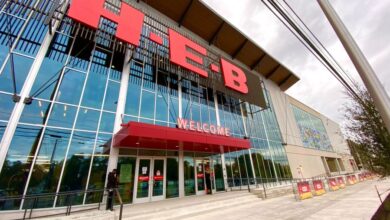The Evolution of Austin’s Retail Scene: Trends to Watch
Austin, Texas, known for its vibrant music scene and bustling tech industry, is also a hotbed for retail innovation. Over the years, the city’s retail landscape has undergone significant changes, reflecting shifting consumer preferences and technological advancements. In this blog post, we will explore the evolution of Austin’s retail scene and discuss some key trends to watch in the coming years.
Historical Perspective
Historically, Austin’s retail scene was dominated by traditional brick-and-mortar stores, with shopping malls and department stores serving as the primary destinations for consumers. However, with the rise of e-commerce and changing consumer behavior, the city’s retail landscape has transformed dramatically in recent years.

E-commerce Disruption
The advent of e-commerce giants like Amazon has disrupted the traditional retail model, forcing brick-and-mortar stores to adapt or risk obsolescence. In response, many Austin retailers have embraced e-commerce, creating online storefronts and implementing omnichannel strategies to reach customers wherever they are.
Pop-Up Shops and Experiential Retail
Another trend shaping Austin’s retail scene is the rise of pop-up shops and experiential retail. These temporary, immersive retail experiences allow brands to engage directly with consumers in a more personal and memorable way. From art installations to interactive workshops, pop-up shops have become a popular way for retailers to create buzz and drive foot traffic.

Sustainability and Ethical Consumption
As consumers become more conscious of their environmental impact, sustainability and ethical consumption have become major driving forces in the retail industry. Many Austin retailers are responding to this trend by offering eco-friendly products, implementing sustainable practices, and promoting social responsibility in their supply chains.
Technology Integration
Advancements in technology have also played a significant role in shaping Austin’s retail scene. From augmented reality fitting rooms to personalized shopping experiences powered by artificial intelligence, retailers are leveraging technology to enhance the customer experience and drive sales.

Future Trends to Watch
Looking ahead, several trends are poised to further transform Austin’s retail scene. These include the continued growth of e-commerce, the rise of subscription services, the integration of virtual reality in retail experiences, and the increasing emphasis on personalized marketing and data analytics.
Conclusion
As Austin’s retail scene continues to evolve, retailers must stay ahead of the curve by embracing new technologies, adopting sustainable practices, and creating immersive experiences for customers. By staying attuned to emerging trends and consumer preferences, Austin retailers can thrive in an increasingly competitive marketplace.
FAQ
Q: How has e-commerce impacted Austin’s retail scene?
A: E-commerce has disrupted the traditional retail model in Austin, forcing brick-and-mortar stores to adapt by embracing online sales and omnichannel strategies.
Q: What are some popular experiential retail concepts in Austin?
A: Pop-up shops, art installations, and interactive workshops are popular experiential retail concepts in Austin that allow brands to engage directly with consumers in a more personal way.
Q: How are Austin retailers responding to the sustainability trend?
A: Many Austin retailers are offering eco-friendly products, implementing sustainable practices, and promoting social responsibility in their supply chains to meet consumer demand for ethical consumption.




